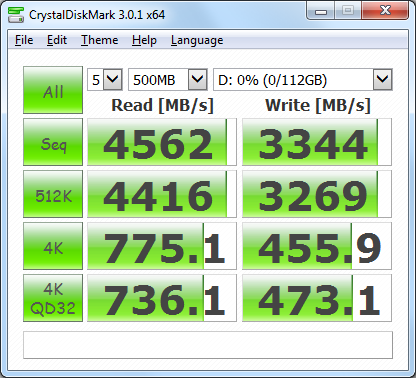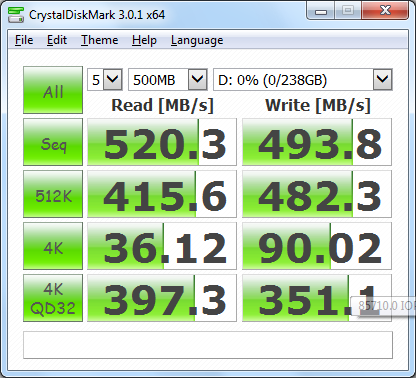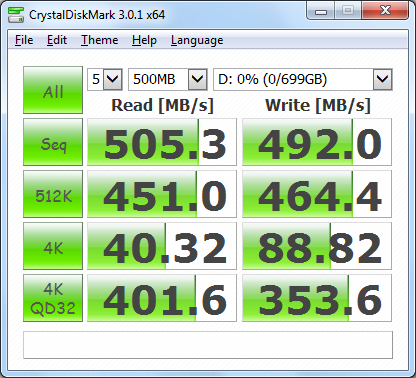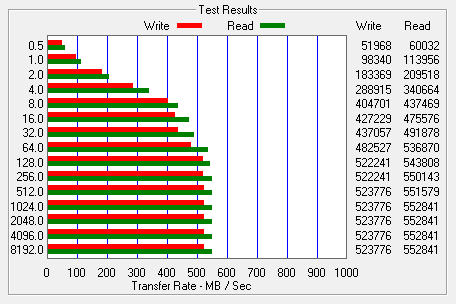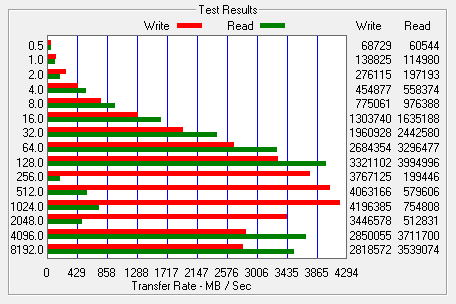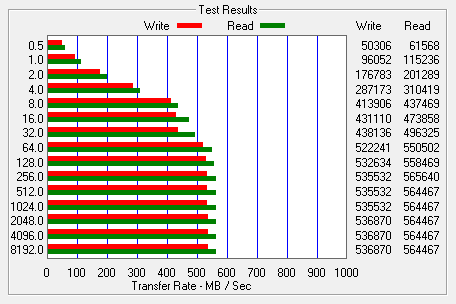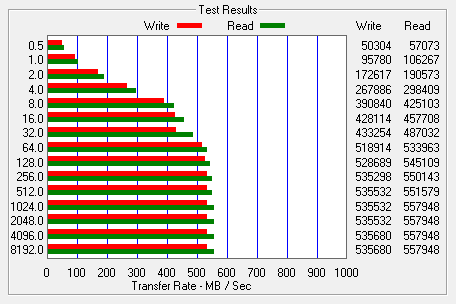The test system used in this review was an HP 8200 Elite. The computer came equipped with an Intel Core i5-2400 CPU, 4GB of DDR3 1333MHz memory, Seagate Barracuda 7200.12 ST3250312AS 250GB SATA 6 Gb/s hard drive, NVIDIA Quadro FX580 512MB PCIe graphics card and an Intel 82579-LM gigabit network card. For the operating system, I installed a fresh copy of Windows 7 Enterprise.
To test the performance of Samsung's 120GB SSD 850 EVO, I ran a series of benchmarks using CrystalDiskMark 3.0.1, HD Tach RW 3.0.4.0, ATTO Disk Benchmark 2.46, AS SSD, HD Tune Pro 4.61, Anvil's Storage Utilities and Iometer. For comparison, I've also included test results from the OCZ ARC 100, SanDisk Ultra II, Crucial MX100, SanDisk Extreme Pro, Samsung SSD 850 PRO, Plextor PX-256M6S, Toshiba Q Series Pro, Plextor PX-256M6M, Samsung SSD 840 EVO mSATA, OCZ Vector 150, OCZ Vertex 450, Silicon Power Slim S55, Samsung SSD 840 EVO, Seagate 600 SSD, SanDisk Extreme II, Plextor PX-256M5M, OCZ Vector, Plextor PX-256M5Pro Xtreme, Samsung SSD 840 Pro and Samsung SSD 840.
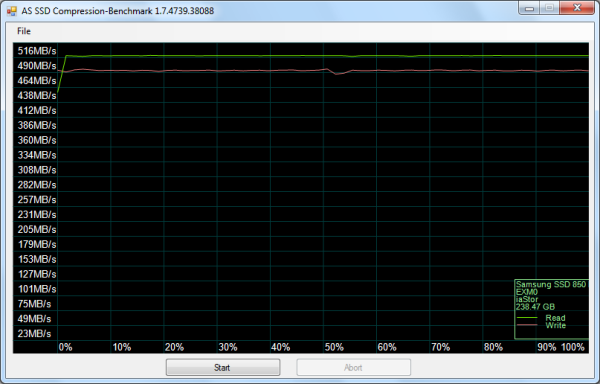
As I mentioned earlier, the 850 EVO is based on Samsung's MGX (S4LN062X01-Y030) controller chip. Looking at the screenshot above, you can see that it performs equally well with both incompressible (0%) and compressible (100%) data.
CrystalDiskMark 3.0.1:
First, I ran a few quick tests using CrystalDiskMark. This benchmark tool measures the performance of a storage device by testing its sequential read and write speeds as well as its random read and write speeds using blocks 512K and 4K in size.
According to Samsung, the 120GB 850 EVO is capable of reading at 550 MB/s and writing at 520 MB/s when connected to a SATA 6 Gb/s port. While the drive performed well, it came up a bit short of these numbers in CrystalDiskMark's sequential read and write speed tests. With RAPID mode enabled, these numbers increased considerably. Looking at the screenshot above, you can see that the 850 EVO was able to read at 4,562 MB/s and write at 3,344 MB/s.
HD Tach RW 3.0.4.0:
Next, I used HD Tach to test the 850 EVO's read, write and burst speeds as well as its seek times and CPU usage.
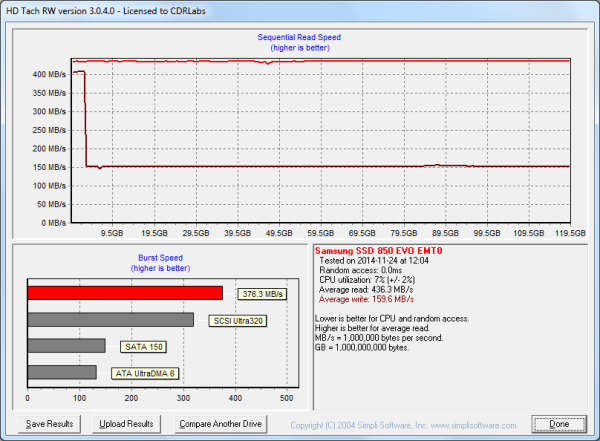
Samsung SSD 850 EVO 120GB
Looking at the screenshot above, you can see that the 850 EVO had average read and write speeds of 436.3 MB/s and 159.6 MB/s respectively, as well as a burst speed of 376.3 MB/s. The screenshot also shows the transition from TurboWrite to what Samsung calls "After TurboWrite" speeds. The 850 EVO starts writing at about 400 MB/s and then drops to about 150 MB/s when the consecutive write operation exceeds the size of the buffer.
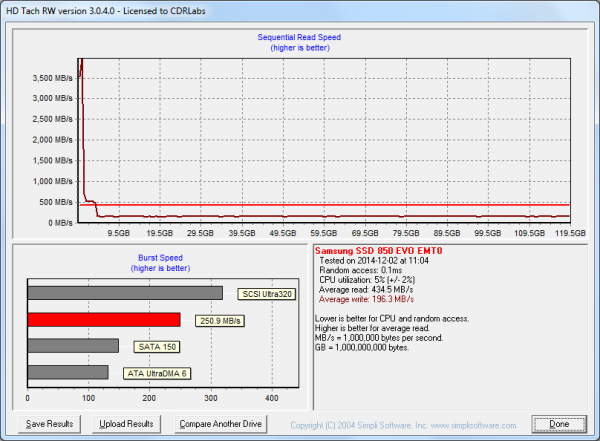
Samsung SSD 850 EVO 120GB (RAPID Mode)
This time around, RAPID mode had very little effect on the 850 EVO's performance. Most likely, this is due to the way HD Tach bypasses the file system when performing its read and write tests.
ATTO Disk Benchmark 2.46:
I also used ATTO Disk Benchmark to test the 840 EVO's sequential read and write speeds. The tests are run using blocks ranging in size from 0.5KB to 8192KB and the total length set to 256MB.
When tested with ATTO, the 850 EVO's read speeds topped out at about 552 MB/s and its write speeds at 523MB/s. With RAPID mode enabled, the read and write speeds were all over the place, but for the most part, it was a considerable improvement.



